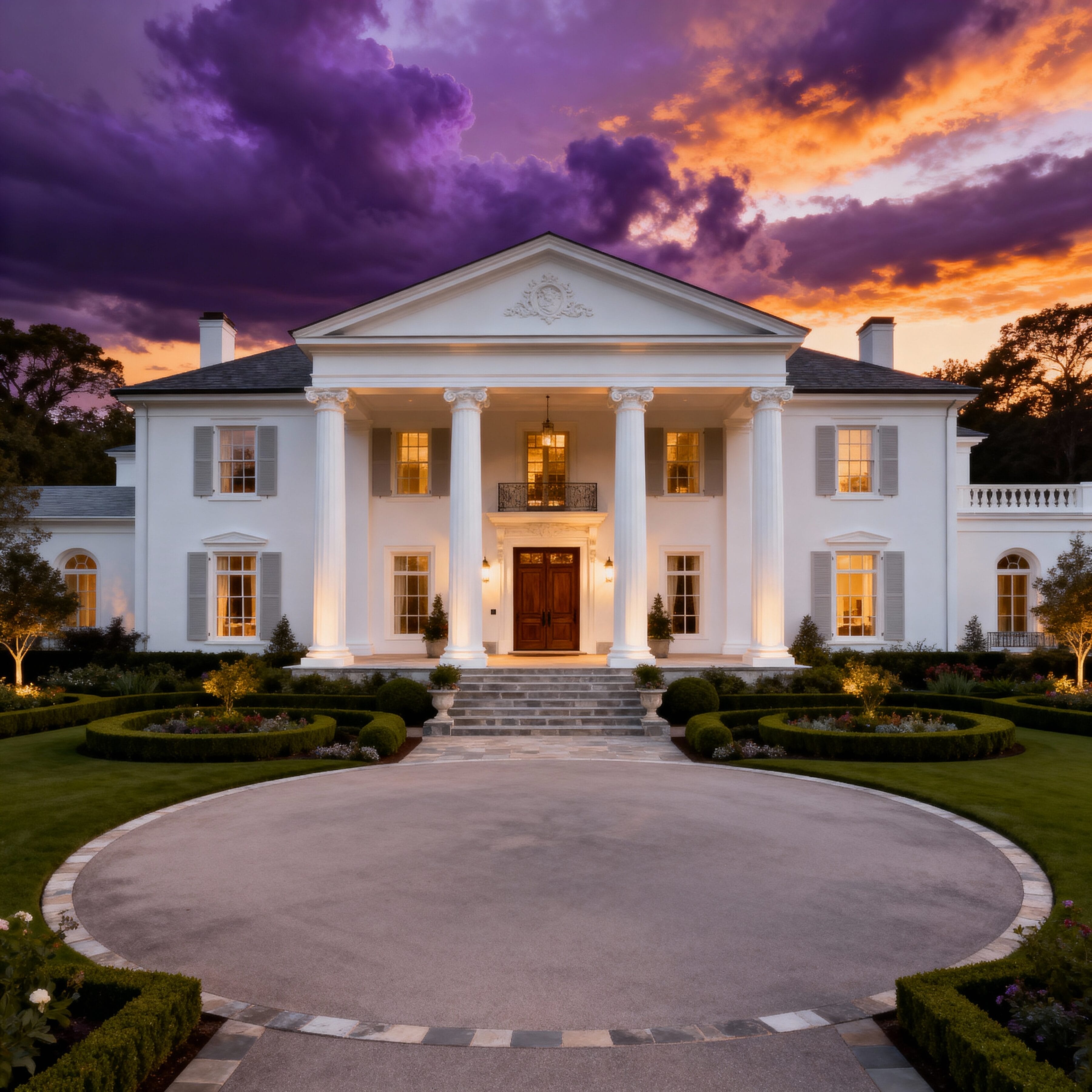The former Staten Island estate of notorious Gambino crime boss Paul “Big Paul” Castellano offers luxury sellers a stark lesson in pricing strategy. Listed at $18 million, this 33,000-square-foot mansion sat on the market for over a year before being pulled without finding a buyer—despite receiving 44,074 views and 2,314 saves on Zillow.
The Castellano Mansion: A Case Study in Luxury Real Estate Mistakes
Paul Castellano commissioned this Todt Hill mansion in 1976, completing it in 1980 at a cost of $3.5 million. The property features 8 ensuite bedrooms, 17 bathrooms, a 13-car showroom-style garage, commercial-grade kitchen, temperature-controlled wine cellar, indoor and outdoor Olympic-sized pools, home theater, gym with sauna, and beauty salon. For buyers interested in Staten Island’s Todt Hill real estate market, this case study offers valuable lessons.
First listed in October 2023 for $16.8 million, the property was delisted after failing to attract a buyer. The estate reappeared in October 2024 with an increased price of $18 million—$1.2 million more than the original listing. The home was pulled from the market again in late 2024 without a sale.
The property’s listing history reveals three critical mistakes that luxury sellers must avoid: overpricing, price increases after market rejection, and ignoring buyer feedback. For more guidance on why homes fail to sell, understanding these pricing errors proves essential.
Why the Castellano Mansion Failed to Sell
Overpricing for the Market
The $18 million asking price represented more than double the $8.5 million record sale price for a nearby property. Listing agent David Le, who sold that record-setting home, noted that no other homes in Staten Island or the surrounding area were priced anywhere close to $18 million.
The Castellano property’s price exceeded market reality by a substantial margin. When the home across the street sold for less than half the asking price, potential buyers recognized the pricing disconnect immediately.
Over-Customization Limits Buyer Appeal
Over-customization narrows the buyer pool to those whose taste already aligns with the property’s specific features. The Castellano mansion includes highly personalized elements like Egyptian-themed decor, period wallpaper, and ornate marble bathrooms that reflect one owner’s unique style rather than broad luxury appeal.
David Le explained that over-customization restricts appeal in luxury real estate. Properties with idiosyncratic features require buyers who appreciate those exact design choices, drastically reducing the potential buyer pool.
Historical Baggage Affects Marketability
The mansion’s connection to organized crime presented an additional marketing challenge. Castellano was assassinated outside Sparks Steak House in Manhattan on December 16, 1985, in a hit organized by John Gotti. This infamous history, while interesting to some, deterred serious luxury buyers seeking prestigious addresses without controversial associations.
Listing agent Melsa Skrapalliu emphasized that buyers should look beyond the home’s historical significance. However, the market response demonstrated that luxury buyers actively avoid properties with problematic pasts that could affect resale value and social standing.
Luxury Market Trends Affecting High-End Sales in 2025
Longer Time on Market for Luxury Properties
Luxury properties took an average of 319 days to sell in 2024, compared to the national median of 60 days. According to luxury real estate market research, roughly one in eight luxury homes took more than 600 days to sell, while 4% sat on the market for over 1,000 days.
Homes that sold quickly—within 180 days—averaged only 89 days on market and retained more of their original value. Properties exceeding 180 days on market averaged 514 days and experienced sharper price declines.
Price Reductions Becoming Standard
Luxury homes sold for an average of 13% below their initial listing price in 2024. The discount becomes more pronounced the longer a property sits on market. Buyers increasingly wait for price reductions rather than submitting offers on overpriced properties.
This pricing pressure reflects a fundamental shift in luxury buyer behavior. Affluent buyers research comparable sales extensively and refuse to overpay, even for exceptional properties.
Buyer Selectivity Increases
Luxury buyers in 2025 prioritize quality over quantity. They take more time scrutinizing every detail and demand that properties meet exacting standards before making offers. The days of emotional buying decisions and bidding wars have given way to calculated, data-driven purchasing.
Affluent buyers view luxury real estate as a tangible asset and wealth preservation strategy. They approach purchases with the same analytical rigor they apply to other investments, demanding clear value propositions and realistic pricing.
Market Rebalancing Creates Negotiation Opportunities
The luxury market has shifted from the pandemic-era frenzy to a more balanced state. Inventory for luxury single-family homes increased 14.4% year-over-year in late 2024, giving buyers more options and greater negotiating power. For Staten Island sellers navigating multiple offers, understanding this market shift helps inform strategy.
This rebalancing benefits prepared sellers who price correctly from the outset. Properties that align with market expectations receive serious interest, while overpriced listings languish ignored.
The True Cost of Overpricing Luxury Real Estate
Lost Momentum During Critical First Weeks
The first two weeks after listing generate the most buyer interest for any property. Overpriced homes miss this crucial window entirely, as serious buyers dismiss them immediately based on price alone.
Once a property loses initial momentum, it carries an invisible stigma. Buyers wonder what’s wrong even after price reductions, assuming the home has fundamental issues beyond pricing.
Reduced Final Sale Price
Homes that start overpriced ultimately sell for less than they would have with correct initial pricing. The longer a property sits on market, the more buyers lowball offers, viewing the extended listing period as evidence of seller desperation.
Research confirms that properties priced correctly from the start sell faster and for higher prices than those requiring multiple price reductions. The initial pricing decision determines the entire sales trajectory.
Wasted Marketing Investment
Overpriced listings waste the most valuable marketing resources: time, professional photography, staging, open houses, and advertising. All these efforts occur during the initial listing period when the property receives maximum attention from the wrong audience—bargain hunters and curious onlookers rather than serious buyers.
Carrying Costs Accumulate
Extended time on market increases carrying costs including property taxes, insurance, maintenance, utilities, and opportunity costs. For luxury sellers, these expenses accumulate rapidly, potentially totaling tens of thousands of dollars per month.
Lessons for Luxury Home Sellers
Price Correctly from Day One
Accurate pricing requires comprehensive market analysis, not aspirational thinking. According to the National Association of REALTORS® pricing guidelines, sellers must examine recent comparable sales, adjust for current market conditions, and set competitive prices that generate immediate interest.
Working with an experienced luxury real estate agent who provides honest, data-driven pricing recommendations prevents costly overpricing mistakes. The right agent tells sellers the truth rather than inflating prices to win listings.
Understand Your Competition
Sellers must research comparable properties currently on market and recently sold. Understanding what similar homes sold for and how long they took to sell provides essential context for pricing decisions.
Properties competing for the same buyer pool must differentiate themselves through price, condition, features, or location. Overpricing eliminates price as a competitive advantage and forces the property to compete solely on other factors.
Avoid Emotional Pricing
Sentimental value, renovation costs, and personal financial needs cannot determine listing prices. The market—specifically, what buyers willingly pay—dictates property values regardless of seller circumstances.
Successful luxury sellers separate emotions from pricing decisions. They recognize that buyers don’t care about the seller’s investment in the property, only about the current market value and how it compares to alternatives.
Respond to Market Feedback
When a luxury property receives few showings or no offers within the first month, the market is signaling that the price is too high. Sellers must adjust quickly rather than waiting months hoping for the right buyer. Understanding Staten Island housing inventory provides essential context for pricing decisions.
Buyer feedback through showing responses, offer activity, and agent comments provides valuable intelligence. Ignoring this feedback prolongs the sales process and reduces the final sale price.
Consider Timing and Market Conditions
Current market conditions significantly impact luxury property sales. Sellers must consider factors including interest rates, stock market performance, economic uncertainty, and local market trends when pricing properties. The DeFalco Realty market report provides current data to inform these decisions.
The luxury market moves independently from the broader housing market but remains subject to economic pressures affecting affluent buyers. Understanding these forces helps sellers time listings and set appropriate prices.
How the Luxury Market Differs from Traditional Real Estate
Smaller Buyer Pool Requires Different Strategy
Luxury properties have far fewer potential buyers than traditional homes. According to NAR luxury market data, homes priced at $500,000 and above represent only 15.4% of total existing home sales, while million-dollar-plus sales account for just 2.9% of transactions nationally. This smaller buyer pool means that overpricing by even 5-10% can eliminate qualified buyers entirely.
Luxury property specialists understand that finding the right buyer takes longer and requires targeted marketing to high-net-worth individuals who can afford the property.
Cash Purchases Dominate
Nearly half of all luxury home purchases in 2024 were cash transactions. This buying power means luxury buyers are less affected by interest rate changes than traditional buyers but more sensitive to stock market performance and overall wealth fluctuations. The Institute for Luxury Home Marketing reports that cash-rich buyers maintain demand even during economic uncertainty.
Cash buyers have the financial capacity to wait for the right property at the right price. They rarely feel pressure to compromise on price or property features.
Unique Properties Require Custom Valuation
Luxury properties often feature one-of-a-kind elements that complicate valuation. Standard comparable sales analysis becomes less reliable when properties include custom features, unusual sizes, or unique locations.
Experienced luxury agents develop specialized valuation methods that account for distinctive property characteristics while remaining grounded in market reality.
Alternative Paths When Traditional Sales Fail
Auction Strategies for Stale Listings
Properties that have sat on market for extended periods may benefit from auction strategies. Luxury auctions can create urgency, attract new buyers, and establish definitive market value.
Auctions work best for unique properties, estates with complicated histories, or listings that have become stale through extended market exposure. The auction process resets buyer perceptions and establishes a clear deadline for action.
Price Positioning for Quick Sale
Sellers who must move quickly can strategically price below market to generate multiple offers and competitive bidding. This approach trades a slightly lower price for speed and certainty of sale.
Competitive pricing creates urgency among buyers who fear losing a well-priced property to other bidders. The resulting competition often drives final sale prices higher than the listing price.
Off-Market Sales to Qualified Buyers
Luxury properties sometimes sell more effectively through off-market channels to pre-qualified buyers. This approach avoids the stigma of failed public listings while maintaining privacy.
Off-market sales work particularly well for properties with unique features, complicated histories, or sellers who prioritize privacy over maximum exposure.
The Bottom Line for Luxury Sellers
The Castellano mansion’s failure to sell at $18 million demonstrates the fundamental principle that luxury real estate success requires market-driven pricing regardless of property features, historical significance, or seller expectations. For additional insights, explore Brooklyn’s luxury real estate trends and how market dynamics affect pricing strategies.
Luxury sellers who price correctly from the outset, work with experienced agents, respond to market feedback, and adjust expectations based on current conditions maximize both sale price and speed of sale. Those who ignore market signals, overprice properties, and wait for unlikely buyers face extended marketing periods, multiple price reductions, and ultimately lower net proceeds.
In 2025’s rebalanced luxury market, buyers hold more power than at any time since the pre-pandemic era. Successful sellers recognize this shift and adapt their strategies accordingly, treating luxury real estate sales as business transactions requiring data-driven decisions rather than emotional attachments.
Ready to sell your luxury property? Contact DeFalco Realty for expert guidance on pricing strategy, market positioning, and successful luxury home sales. Our experienced team understands the nuances of high-end real estate and will help you achieve the best possible outcome for your property.

